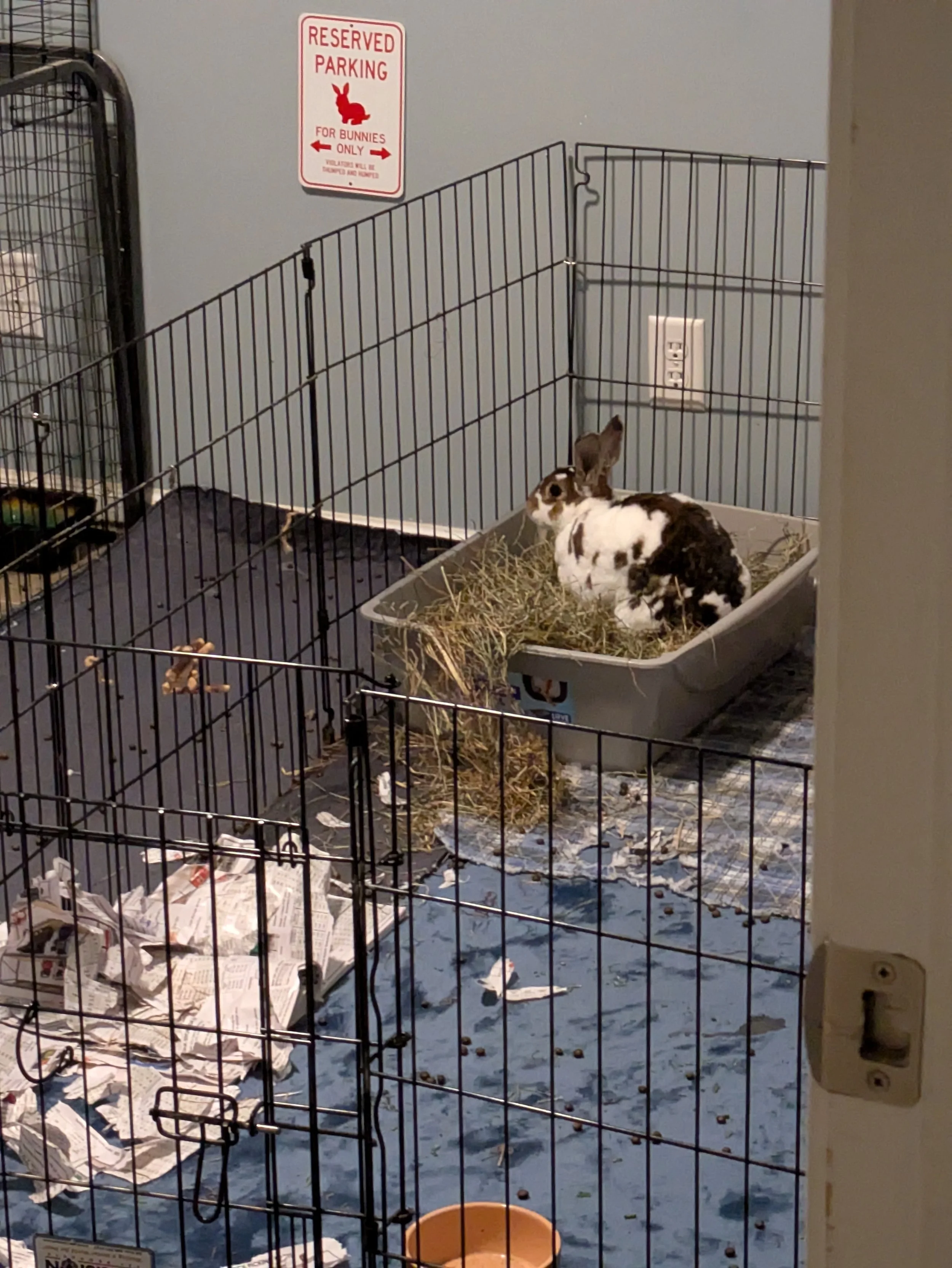Litter Box Training Tips
Training rabbits to use a litter box is generally an easy process. Many rabbits simply need a fresh box of your choosing with a paper-based bedding and hay to encourage them to use it. For rabbits, poop and pee are strongly associated with territory and marking, so if you are struggling with litter box training, remember to check if your rabbit has been spayed or neutered first. Rabbits are naturally very neat animals and prefer to use a litter box instead of having a dirty pen.
For guidance on how to set up a litter box for rabbits, check out our set up article here.
Ideally, litter box training for rabbits should follow these general guidelines:
Identify where your rabbit naturally likes to go.
Most rabbits will naturally choose a corner as their bathroom. To make the transition easy on your rabbit, work with them. If they already have a preferred spot, do not try to change it. It can quickly become a losing battle if you and your rabbit are at odds over where to use the bathroom.
Restrict their freedom until the rabbit begins going in their litter box
If your rabbit lives in an exercise pen, this means no free-roaming throughout the house the first few days or week so they understand where the bathroom is. Most rabbits adjust to their “home base” in a few days.
Gradually increase their space. If they stop using the litter box, restrict the space again until litter box use resumes
Place their poop in the litter box so it begins to smell like them. Stool is passed through the scent glands when exiting the anus. Each rabbit has their own distinctive smell that all other rabbits can identify. We cannot smell it but they can, so moving the poop tells your rabbit that this box belongs to them and that is a good place to poop.
A Perfect Litter Box
Successful litter box training should have:
A layer of absorbent material like Carefresh, woodstove pellets, or similar products at the bottom
A layer of hay (typically a blend of orchard and timothy)
A neat pile of poops in your rabbit’s designated “bathroom” corner
What happens if your rabbit doesn't follow expectations for litter box training? There are a variety of factors at play and it can be frustrating for both the rabbit and the owner. The rabbit is trying to get a message across and the owner can have a hard time understanding that message. Below are a few reasons rabbits have refused litter box training with potential solutions to these difficulties.
Potential Problem 1: The box is in the wrong place according to your rabbit.
Potential Solution 1: Move the litter box to different areas of the pen (tip: your rabbit may already be using a favorite corner). Don’t be afraid to reposition the box or place it directly where your rabbit is pooping or peeing. If it’s usually set vertically, try turning it horizontally. It may not seem like much to us, but small changes like this can make a world of difference to your rabbit.”
Potential Problem 2: They do not like the litter material the owner has chosen
Potential Solution 2: There are a variety of paper-based litters available including Carefresh, Yesterday’s News, etc. If your bunny keeps digging out the litter from their box try a different brand. Rabbits can be very picky about what they choose to use the bathroom in.
Potential Problem 3: The box is the wrong style (low sided, too small, high sided, etc)
Potential Solution 3: Rabbits can have variety of reasons the litter box is the wrong style and much of it is related to their personality:
They have arthritis and it hurts to get in
They feel they are too big or small for the box provided
They feel it is the wrong shape and cannot adequately create a “bathroom” and “kitchen” side
They prefer to use the bathroom in an enclosed area or open-aired area
Potential Problem 4: Hay is in the wrong spot of the box
Potential Solution 4: Some rabbits prefer their hay on one side of the box versus another and as a result push the hay out of the box. Try placing it in a new area and if they continue to not use the box appropriately, try getting a hay feeder to put next to the box in addition.
Example: Nora
Nora is a rabbit that absolutely refused litter box training. Every day the owner would clean the litter box, followed all suggestions, and even consulted a vet to see if there was another reason for the refusal. Despite all that, the owner came home to this every day. Chaos!
Litter, poop, urine, and hay everywhere. After a month of trying different ways to train a rabbit to use the litter box, the owner finally tried replacing the litter box with a different style of box. Nora immediately started using the box and stopped creating a mess everyday. It turns out Nora did not like the shallow low-entry box at all.
As you can see, some rabbits can take to litter box training like a duck takes to water- but other times, they have strong opinions and aren’t shy about communicating it. When litter box training, try to work with your rabbit and try some of our above strategies.




